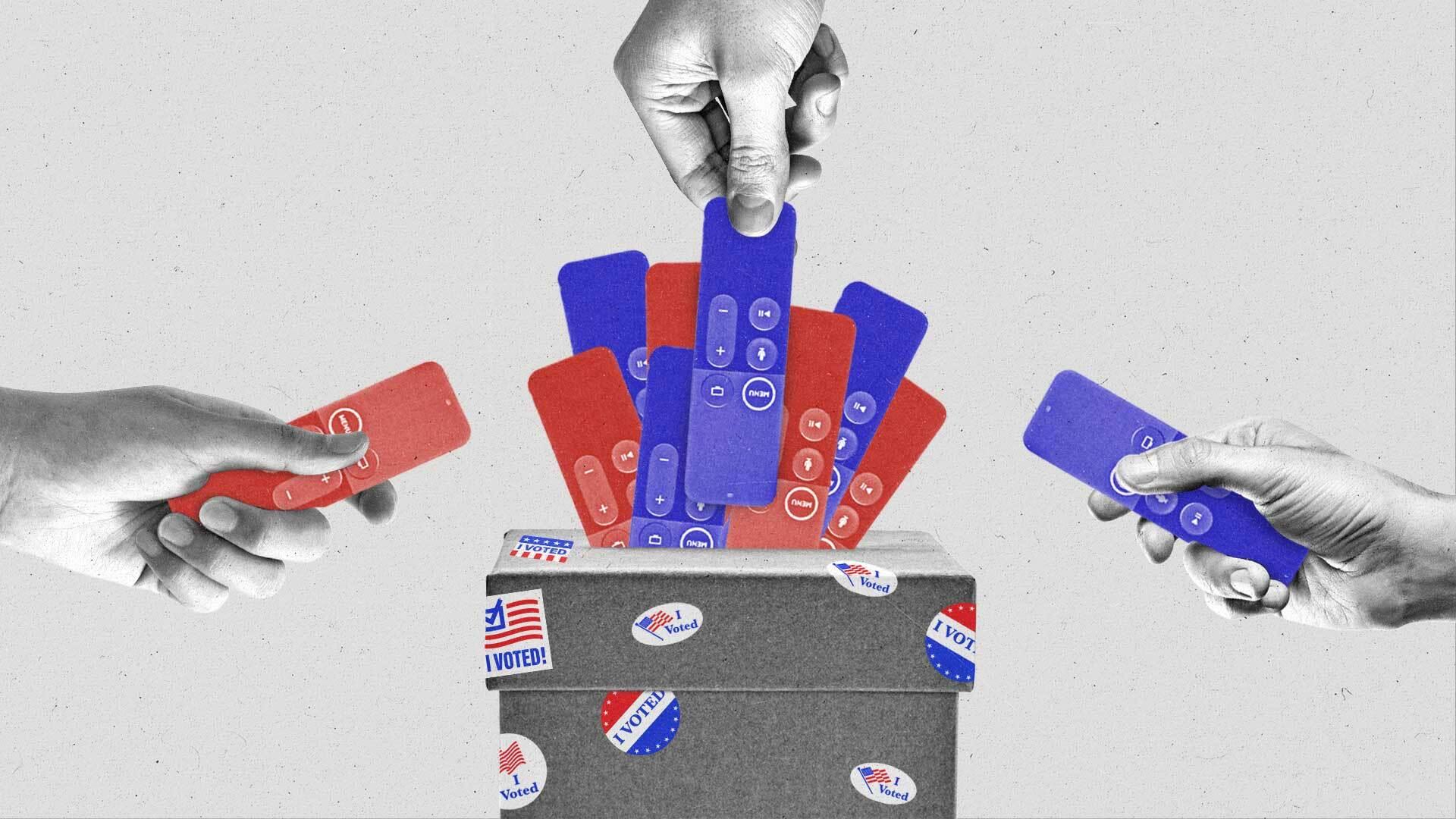A few battleground states will decide the U.S. presidential election. Here’s how political advertisers are spending there.

The U.S. presidential election is in 63 days, but the first mail-in ballots will arrive in voters’ mailboxes this week — a reminder that the cycle is in full swing, and the time for candidates to woo Americans is now.
Republicans and Democrats realize the difference between winning and losing will likely be determined by seven battleground states. Within those states, the respective parties are counting on data-driven media to give them the edge. Their tactics include creating audience segments for potential swing voters and the issues they care about most; testing the effectiveness of campaign messaging in real time; and controlling which groups they reach through streaming.
“There’s a reason that 70% of the resources in a presidential campaign go to advertising,” James Slezak tells The Current. He is the CEO of Swayable, which measures the effectiveness of ads in real time. “And as a result, there’s a reason why this kind of measurement is critical.”
It’s shaping up to be a tight race. The latest polling from FiveThirtyEight shows Vice President Kamala Harris ahead of former President Donald Trump in Pennsylvania, Arizona, Michigan, Minnesota and Wisconsin. Meanwhile, Trump holds a slight edge in Georgia and North Carolina.
In those states, which have captured 76% of presidential ad spend so far, according to AdImpact, Democrats outspent Republicans by $100 million from Super Tuesday to Aug. 23.
Harris’ popularity has surged since entering the race, but still there is a 3.6% or less difference in polling between her and Trump in all seven swing states. Harris has picked up steam with two key groups: young women and Gen Z, according to modeling from consumer data and intelligence company Resonate.
“Since Kamala is now at the top of the ticket, she’s certainly opened up the Sunbelt as a path to victory,” Resonate’s Vice President of Political and Advocacy Partnerships, Bob Brennan, tells The Current. “She’s not as beholden to the blue wall anymore.”
Resonate has thousands of data points, with Brennan saying prescription drug prices and immigration are two issues ranked very high for swing voters. Immigration has been mentioned in 74% of the Trump campaign’s broadcast ads since Harris entered the race, by far its most talked-about issue, according to AdImpact.
Quick off the mark post-convention, the Harris campaign released a new ad titled “Opportunity,” which targets middle-class Americans across battleground states. Of all the swing states, both parties are spending the majority of their ad dollars in Pennsylvania. Since the March 5 primaries, Democrats have spent $99.4 million in Pennsylvania, or 28% of their battleground-states spend. Meanwhile, Republicans have spent $89.4 million, 35% of their swing-state spend, according to AdImpact.
Notably, Pennsylvania swing voters are slightly easier to reach on streaming (70%) than traditional TV (68%), according to Cross Screen Media, even though Pennsylvania’s average voter is older than the average American voter by two years.
In the timespan between July 22 and Aug. 5, Trump reached 4% more swing voters in Pennsylvania than Harris, while capturing 65% of the impressions those swing voters in Pennsylvania, Cross Screen Media reports.
Rock the CTV vote
Being efficient with those big budgets is critical, says Nina Kaplan, director of media at political agency Rising Tide Interactive (RTI), which has worked on winning campaigns for senators Tim Kaine and Amy Klobuchar. She cautions that it’s important to avoid “hitting people over the head” with targeted ads. Kaplan can see which potential voters RTI is reaching, so it can frequency cap or retarget. Frequency capping is part of the reason she believes connected TV (CTV) is still the most undervalued tool within political advertising.
Case in point, a statewide campaign in a battleground race was able to reach households 36% more efficiently through CTV than through traditional TV, according to political agency Push Digital, which tapped in to tools from Comscore and Proximic.
This underscores how streaming can punch above its weight, offering quality reach with modern targeting tools.
And while a significant amount of attention goes to the presidential race, only 20% of the total ad spend this political cycle is projected to go to the top of the ticket, according to AdImpact. Down the ballot, Kaplan says it’s easier to persuade voters because there’s more interest in issues rather than strictly party loyalties.
Test to be the best
Still, a frequent question political marketers ask in the sprint to the ballot box is “Is this working?” That’s easier to answer today than it was before the dawn of ad tech, given the real-time feedback available on campaign-message effectiveness.
Swayable does just that for clients, testing ads and messages and feeding back results in 24 hours. This allows firms to know in a moment if their ads will persuade specific audiences. Swayable worked with the Biden-Harris campaign in 2020, as well as the campaigns for Rev. Raphael Warnock and Jon Ossoff during their unexpected Senate victories in Georgia.
“You need real-time measurement because of how quickly the conversation changes and events change,” Swayable’s Slezak says. “Stories change over time. We’re in a new world now, where those measurements are finally possible.”
Liz Bennett, partner at Democratic agency Middle Seat, says bluntly, “If you don’t do testing, you are wasting money.” While 2020 had a lot of pre-campaign-flight testing, Bennett says this cycle, campaigns are testing ads midflight to see if the same audience is motivated by the same message.
Slezak believes that historically, potential swing voters were segmented in overly simplistic ways, such as targeting people in the middle ground between the Republican and Democratic platforms. He says, “It turns out that’s not at all right. You can find persuadable people pretty much anywhere.”
Subscribe to The Current
Subscribe to The Current newsletter